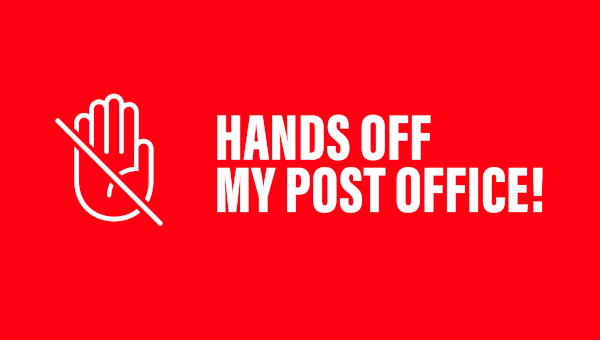After B.C. Health Services: Back to Reality
“As a power countervailing management the trade unions are much more effective than the law has ever been or can ever be.” — Otto Kahn-Freund
In the deteriorating economic climate, resource, manufacturing, construction and now private-services workers have been front and centre in employers’ crosshairs. Against the backdrop of layoffs and plant closings stemming from financial and economic retrenchment, employers have wrenched give-backs from unionized and unrepresented workers alike. But job losses are mounting in the public sector, and workers here have hardly been spared. Beyond urging corporations to extort concessions from their beleaguered workforces, governments at all levels have seen the crisis as an opportunity to undermine the rights and working conditions of public sector workers.
For example, last November, the City of Ottawa – with Mayor Larry O’Brien explicitly taking the economic slump as justification – sought to lengthen the working day of its transit workers, eliminate drivers’ right to choose their shifts, and give management new opportunities to contract out maintenance work, provoking a 51-day strike. And this March the New Brunswick government told its workers in the middle of bargaining that it would simply legislate a 2-year wage freeze. The City of Toronto is now the latest hoping to freeze employees’ salaries.
Leading the way, arguably, has been the federal government. The November Speech from the Throne signaled that legislated wages caps were imminent, and Flaherty’s economic update a week later promised to remove the right to strike for federal employees as well.
The 2009 budget made good on the government’s threats. Much attention has been paid to the pay equity provisions of the 2009 Budget Implementation Act, which among other things criminalizes union efforts to bring pay equity complaints to the federal labour board. Receiving less attention beyond the Ottawa beltway has been the budget’s pay restraint measures. Easily the most far-reaching federal government interference with collective bargaining in a decade, the Expenditure Restraint Act opens signed collective agreements and rolls back agreed-to increases from 2006 forward to 2011.
Going to Court
Government violations of workers’ rights are hardly new, and neither are union’s legal efforts to block these infringements. The wage restraint legislation has already provoked one Charter challenge, and both it and the pay equity reforms will attract more litigation yet. Labour’s trench warfare in the courts had been mostly fruitless up until the landmark B.C. Health Services decision of the Supreme Court in June 2007. Unions hailed the ruling as opening no less than a new era in labour relations, guaranteeing the right to collective bargaining and vindicating the long and costly slog through the legal system. With the Court’s green light, unions launched Charter challenges against exclusions, restrictions on the scope of bargaining, restraint legislation, government restructuring of bargaining units, and restrictions on the right to strike.
Some of these applications have been successful. For instance, the Ontario Court of Appeal’s November 2008 Fraser decision ordered the provincial government to legislate meaningful collective bargaining for agricultural workers. Yet litigation and appeals to the authority of the Charter and the Supreme Court have had strikingly little effect in deterring governments from restricting the right to bargain and to strike. This is not surprising. The June 2007 Supreme Court decision challenged only governments’ failure to ‘consult’ with their employees before legislating the terms and conditions they see fit to impose. Reflecting this, the federal wage restraint act eviscerates negotiations while preserving the veneer of collective bargaining; provincially, the Saskatchewan government last year enacted essential services and labour law reforms restricting the right to organize, bargain and strike after what it claimed to be ‘consultations’ with the labour movement. In June 2008, the Alberta government also imposed restrictions on the right to organize and strike, although the haste with which it rammed the bill through the legislature may well be viewed as unseemly under judicial review. Clearly the ‘new era of labour relations’ inaugurated by B.C. Health Services is off to a rocky start.
The New, Old World of Struggle
The federal government’s wage restraint measures successfully exploited existing divisions among public service unions, and the very idea of a united response was stillborn from the beginning. Bargaining mobilization campaigns were also halted rather than deepened into a defense of basic rights. While uncertain leadership has played a role, government employees continue to feel intimidated and isolated from the rest of the working class, and unions themselves frequently have difficulty understanding the weaknesses that flow from this.
Whatever the size and scope of the obstacles in the way of mobilization, however, legal challenges cannot be expected to substitute for equipping, organizing and activating members in defense of their rights. The discourse of Charter rights has given public-service unions a certain lingua franca and universal appeal through which to appeal to Canadians, but they will have to go much further toward recognizing the commonality of workers’ struggles in the current period, framing demands in such a way as to reduce isolation, and aligning their members’ interests with class-wide demands. For instance, as business groups increasingly target federal public-service pensions as the last redoubt of worker privilege, public-service unions would do well to throw their weight behind the CLC’s push for expanded CPP coverage for all workers, while demanding that the labour movement begin to mobilize people behind it. Such an effort would deflect some of the right-wing attack on the ‘entitlement’ of public-service pensions, while resonating with private-sector unions whose own employer plans are being shredded. The CAW’s attack on the wage restraint bill, coming as auto workers faced their own employer’s demands for concessions, signaled a recognition of the desperate need for greater solidarity across unions. Developing that recognition into action, in ways which build links between organized and unorganized workers, remains a daunting but essential challenge. •




